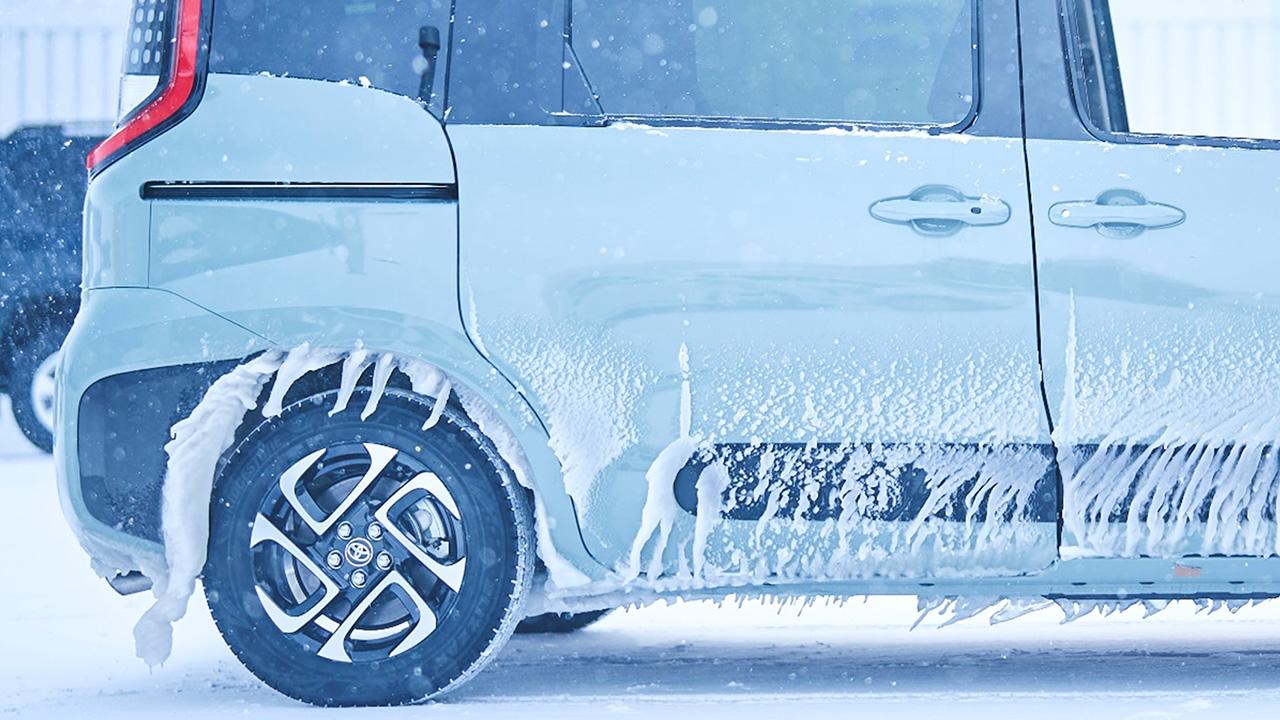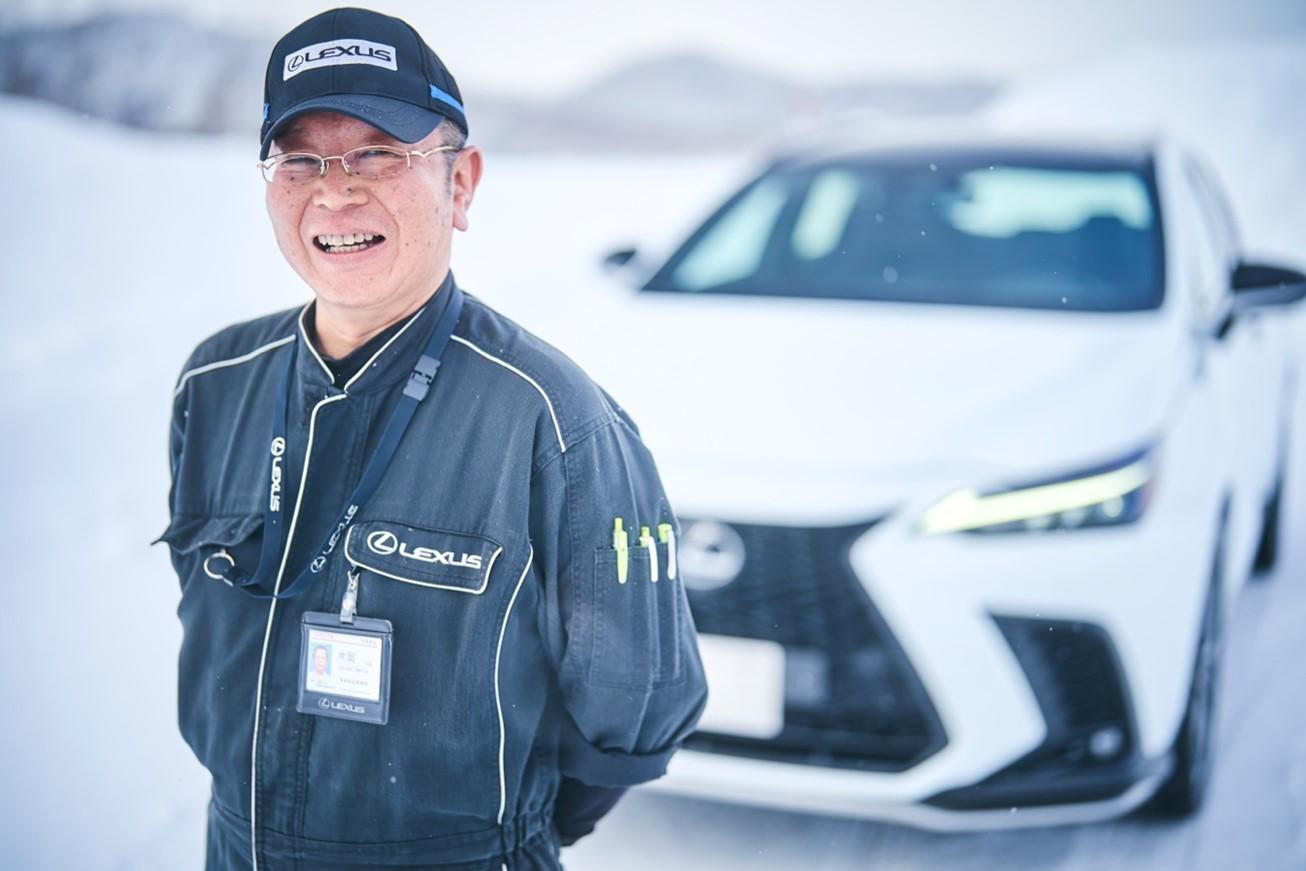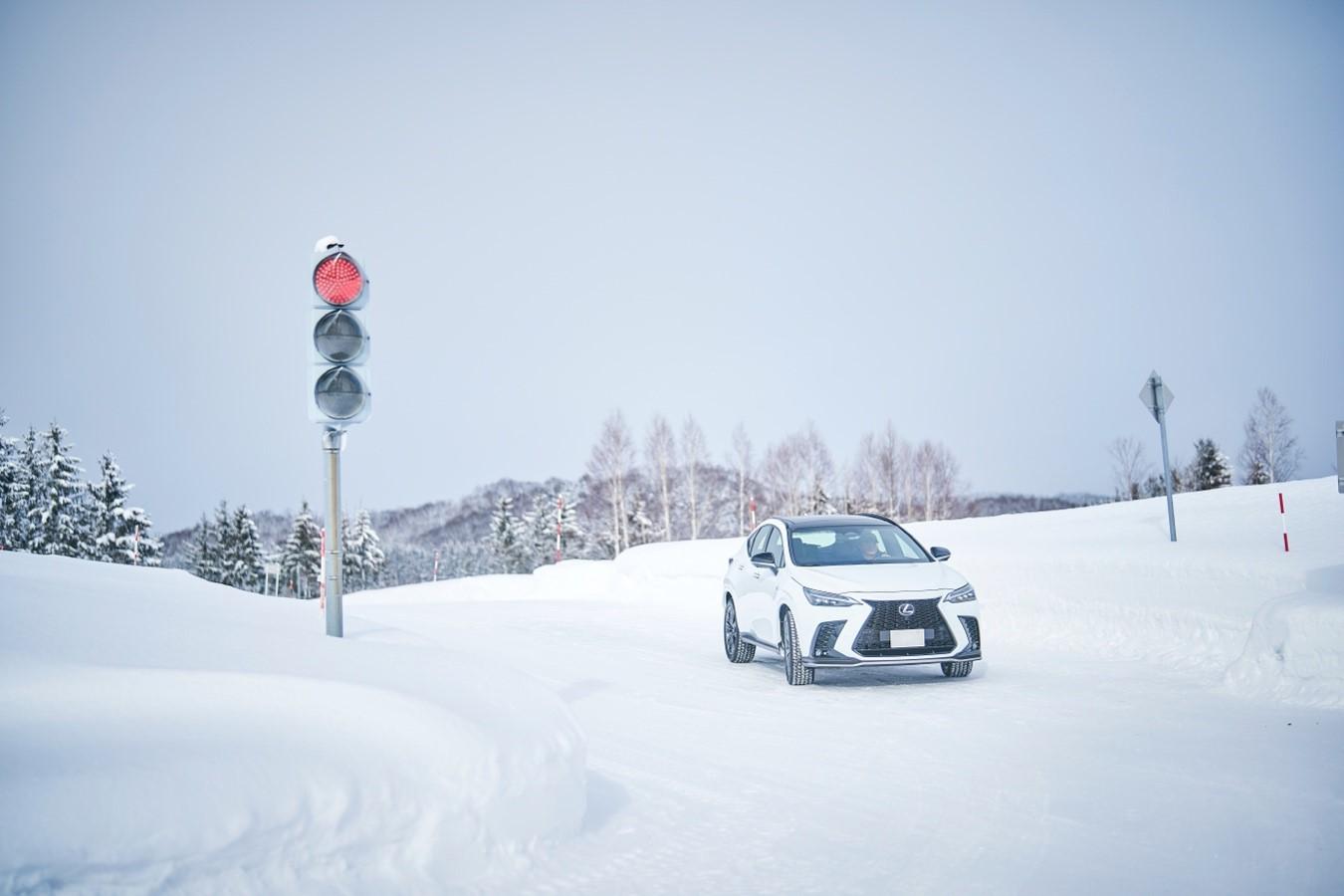
Another glimpse into the frigid, minus 30-degree (-22°F) genba at the Shibetsu Proving Ground, where Toyota's test drivers strive to make ever-better cars.
The “pits of terror” locals know all too well
Tomohide Kataoka showed us around a snow-covered city street area in a Lexus NX, the model he is tasked with testing. This was not a real urban area, however, but a reproduction of city roads within the facility site.
These snow-covered urban roads replicate as accurately as possible the situations that customers actually encounter. Kataoka checks to see if the car remains stable when braking in deep ruts or accelerating.
Down one straight section, we came across a deep hole. Perhaps some readers will recognize this sight.

What are these “pits of terror,” capable of dealing an unpleasant jolt to unwary drivers?
Kataoka
You’ll find these pits all over Hokkaido. They’re caused by manholes.
Even with temperatures below freezing, the sewers remain warm, so the snow around the manhole melts to create a pit. These road conditions are especially common in urban areas like Sapporo, Asahikawa, and Obihiro. We check to make sure that the front spoiler and other parts aren’t damaged by the impact of driving over the hole.
While driving around snowy regions, snow and ice typically adhere to the underside of the car, so we check whether these clumps can cause bumpers or moldings to detach when they’re hit.

On the first lap we drive as usual; the second time round we deliberately step on the gas, and on the third lap we slow down, as if you were driving with rubber boots on. In this way, we strive for behaviors that would ensure anyone can drive safely.
In the test, Kataoka hits the hole at considerable speed; even from the outside, the impact is unmistakable. When we said as much to Kataoka, he responded:
Kataoka
When I watch the streets around town on weekends, people are hitting them at pretty high speeds. That’s why here we deliberately apply greater loads (force from the road surface) than our customers would.
Lastly, Kataoka led us to an intersection with traffic lights, where the movement of vehicles had polished the icy asphalt slick as the surface of a mirror.
The brakes aren't broken…

Kataoka
We check not only whether the car can stop as intended on the slick ice, but also the feel of the ABS and stability control in action.
In the past, the sound and vibration of the ABS activating sometimes led customers to think their brakes were failing.
To solve this, recently we have focused on eliminating noise and ensuring it feels as though the brakes are working naturally.
In addition to ABS and stability control, cars are constantly evolving towards more advanced control, including the precision driving enabled by the motors of hybrid and electric vehicles.
Aside from the first three years at Toyota headquarters, Kataoka has spent his entire career at the Shibetsu Proving Ground. A Shibetsu native, he shared what makes the place special.
Kataoka
At the Proving Ground, We’re a small group of fewer than 200 people, with strong bonds on equal terms.
I meet many wonderful people, and someone’s always quick to assist you in times of need. Given the harsh environment, everyone helps each other out. That’s the great thing about Shibetsu.
Stepping into the shoes of customers living in cold regions, the team at Shibetsu strives to eliminate potential problems and ensure a safe, comfortable driving experience, no matter what the road throws at them.
Even in these extreme environments, Toyota’s test drivers embody the spirit of ever-better carmaking.

